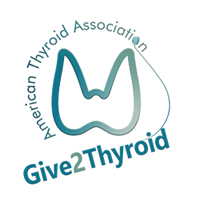ABBREVIATIONS & DEFINITIONS
 Papillary thyroid cancer: the most common type of thyroid cancer. There are 4 variants of papillary thyroid cancer: classic, follicular, tall-cell and noninvasive follicular thyroid neoplasm with papillary-like nuclear features (NIFTP).
Papillary thyroid cancer: the most common type of thyroid cancer. There are 4 variants of papillary thyroid cancer: classic, follicular, tall-cell and noninvasive follicular thyroid neoplasm with papillary-like nuclear features (NIFTP).
Noninvasive follicular thyroid neoplasm with papillarylike nuclear features (NIFTP): a new term has been used to describe a type of papillary thyroid cancer which is non-invasive. These cancers behave less aggressively than typical papillary thyroid cancer and have been shown to have low risk for recurrence and low risk for spread outside of the thyroid.
Follicular variant of papillary thyroid cancer: one of the subtypes of papillary thyroid carcinoma, which has been classified to three different forms: non-invasive follicular thyroid neoplasm with papillary-like nuclear features, invasive encapsulated and infiltrative FVPTC.
Genes: a molecular unit of heredity of a living organism. Living beings depend on genes, as they code for all proteins and RNA chains that have functions in a cell. Genes hold the information to build and maintain an organism’s cells and pass genetic traits to offspring.
Mutation: A permanent change in one of the genes.
Cancer-associated genes: these are genes that are normally expressed in cells. Cancer cells frequently have mutations in these genes. It is unclear whether mutations in these genes cause the cancer or are just associated with the cancer cells. The cancer-associated genes important in thyroid cancer are BRAF, RET/PTC, TERT and RAS.
BRAF gene: this is gene that codes for a protein that is involved in a signaling pathway and is important for cell growth. Mutations in the BRAF gene in adults appear to cause cancer.
Lymph node: bean-shaped organ that plays a role in removing what the body considers harmful, such as infections and cancer cells.
Total thyroidectomy: surgery to remove the entire thyroid gland.
Radioactive iodine (RAI): this plays a valuable role in diagnosing and treating thyroid problems since it is taken up only by the thyroid gland. I-131 is the destructive form used to destroy thyroid tissue in the treatment of thyroid cancer and with an overactive thyroid. I-123 is the non-destructive form that does not damage the thyroid and is used in scans to take pictures of the thyroid (Thyroid Scan) or to take pictures of the whole body to look for thyroid cancer (Whole Body Scan).




